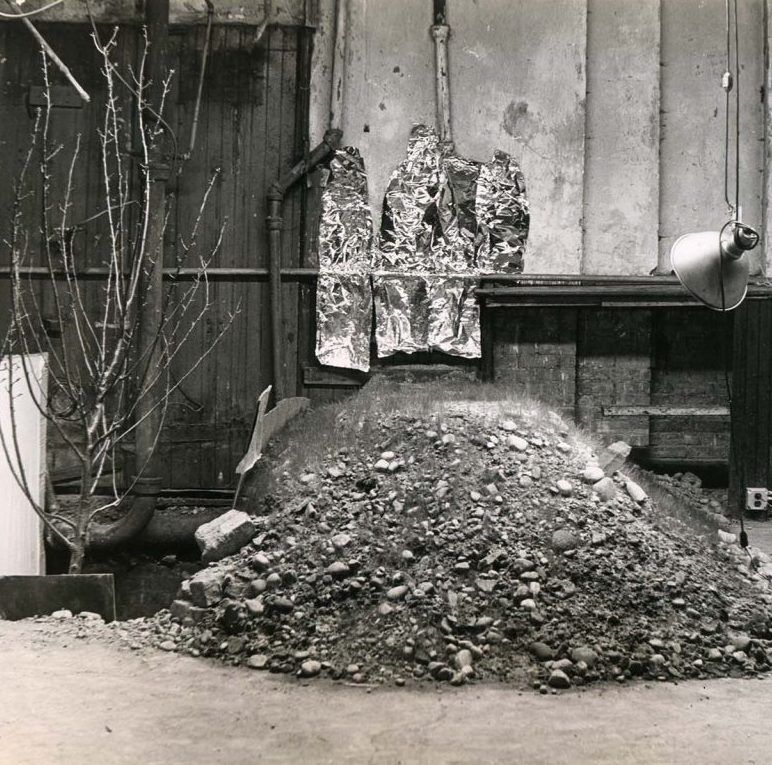
DOCENT PICK
Embracing entropy
13/08/2024
Did conceptual aesthetics kill contemporary art? Many artists would strongly argue so. However, today's narrative we're about to delve into presents a starkly different perspective.
But what can come after reducing art to its strict intellectual quality? This capsule, 'Embodying Entropy,' will provide you with some answers, more than ever, relevant to understanding the profound shift that contemporary art is currently undergoing. It's a journey of discovery that you won't want to miss.
But what can come after reducing art to its strict intellectual quality? This capsule, 'Embodying Entropy,' will provide you with some answers, more than ever, relevant to understanding the profound shift that contemporary art is currently undergoing. It's a journey of discovery that you won't want to miss.
Inside the Spiral

As we've previously discussed, the 1960s and 1970s were a time of profound changes in the art world. Movements emerged that challenged traditional boundaries and sought to redefine the relationship between art, nature, and society. In this context, Robert Smithson's 'Spiral Jetty,' a creation from 1971, stands as a quintessential symbol of this period of decentering. Both symbolically and physically, 'Spiral Jetty' is a powerful challenge to traditional art boundaries, inviting us to experience profound vertigo: the overwhelming power of art when it honors nature and the elements that comprise it.
Another pioneering artist from the 1970s in understanding entropy and the significance of chaos in our society and environment is Dan Graham. His entire body of work is a play of openness, parallelism, reflection, and spatial limitations.
However, this notion of entropy does not only affect space and nature. The age of machines and new technologies, such as television, quickly become tools where the universe's rules collide and where the human mind perceives and plays with the breaches.
Today, contemporary artists explore entropy with great attention to detail, often employing new techniques to create more fragile works. Like "Spiral Jetty," these pieces become subject to erosion, decay, and change over time. This process imbues the works with an even more noble status, offering a new, transcendental dimension to human existence, which is also finite and fragile.
Ariel Cusnir, a young South American artist, illustrates how the figure of the spiral remains relevant today, serving as a true symbol of the chaotic world in which we live.
Exploring the Underground

Gordon Matta-Clark’s “Cherry Tree,” completed in 1971 at 112 Greene Street, NY, was the first piece he created at this location. The installation involved planting a tree in a hole dug in the building's dark, dank basement, embodying the concept of entropy through its inevitable decay and transformation. This work highlights the fragility and impermanence of life, mirroring natural processes. As the tree changes and deteriorates, it symbolizes the constant flux and disorder inherent in both nature and human existence.
Entropy is first and foremost about life and the spheres that contains it. Earth, mud, marginalized natural zones are the most likely to provide this safe environment where entropy unfolds, following the pulse of our planet.
Nina Canell once made a sculpture for ten people that caused the electricity in their homes to go out simultaneously and unannounced once every month for a year. The transfer and distribution of energy has been an integral preoccupation of her work since the beginning, often working with situations that are highly sensitive to spatio-temporal variables. Grounded as much in the chance encounter as in close study, her sculptural process foregrounds material agency.
Seeking Transcendance
A question closely tied to the great mystery of the universe and our place within this chaos is that of spirituality. Many contemporary artists have seen in entropy, and the esoteric imagination of the 1970s, the potential to create works addressing issues of transcendence. Santiago Licata is one such artist, whose works are both troubling and universal.
Intimately linked to the question of transcendence is the contemplation of chaos and the architecture that surpasses us, the very structure of the universe and the beyond, as illustrated by Dana Powell's contemplative window.
Shaun Gladwell pushes this metaphor further by repositioning the human body itself as a site of entropy, where the body interacts with space and undergoes metamorphosis.
Against natural forces?
Dialoguing with Dana Powell's window, Iosu Aramburu's sky illustrates the pictorial tradition shaped by the picturesque and the contemporary legacy of dreamer painters and thinkers like Bachelard, who saw in nature and its entropy the most inestimable source of meaning.
Pati Hill engages in an exercise against entropy by striving to preserve nature in its most beautiful form. In a manner reminiscent of a cabinet of curiosities, her photography aims to freeze the work, creating an ideal double of an idea that is already fading.
In contrast, Victoire Inchauspé does not entirely freeze nature and its memories. She allows entropy to take its course, letting both material and life transform, and poetically reveals the ongoing existence of the work as it continues to age.
Alex Ayed, on the other hand, integrates chaos into his creative process by using only found or repurposed materials. Nothing is lost; everything is transformed.
Barbara Levittoux-Świderska explores the theme of nature captured in a fixed form. Her work delves into the tension between nature's inherent fluidity and the desire to preserve it in a static, unchanging state. Through her art, she examines how this fixation interacts with the natural world's inherent entropy and impermanence, capturing a moment of stillness while acknowledging the ongoing transformation of the natural world.